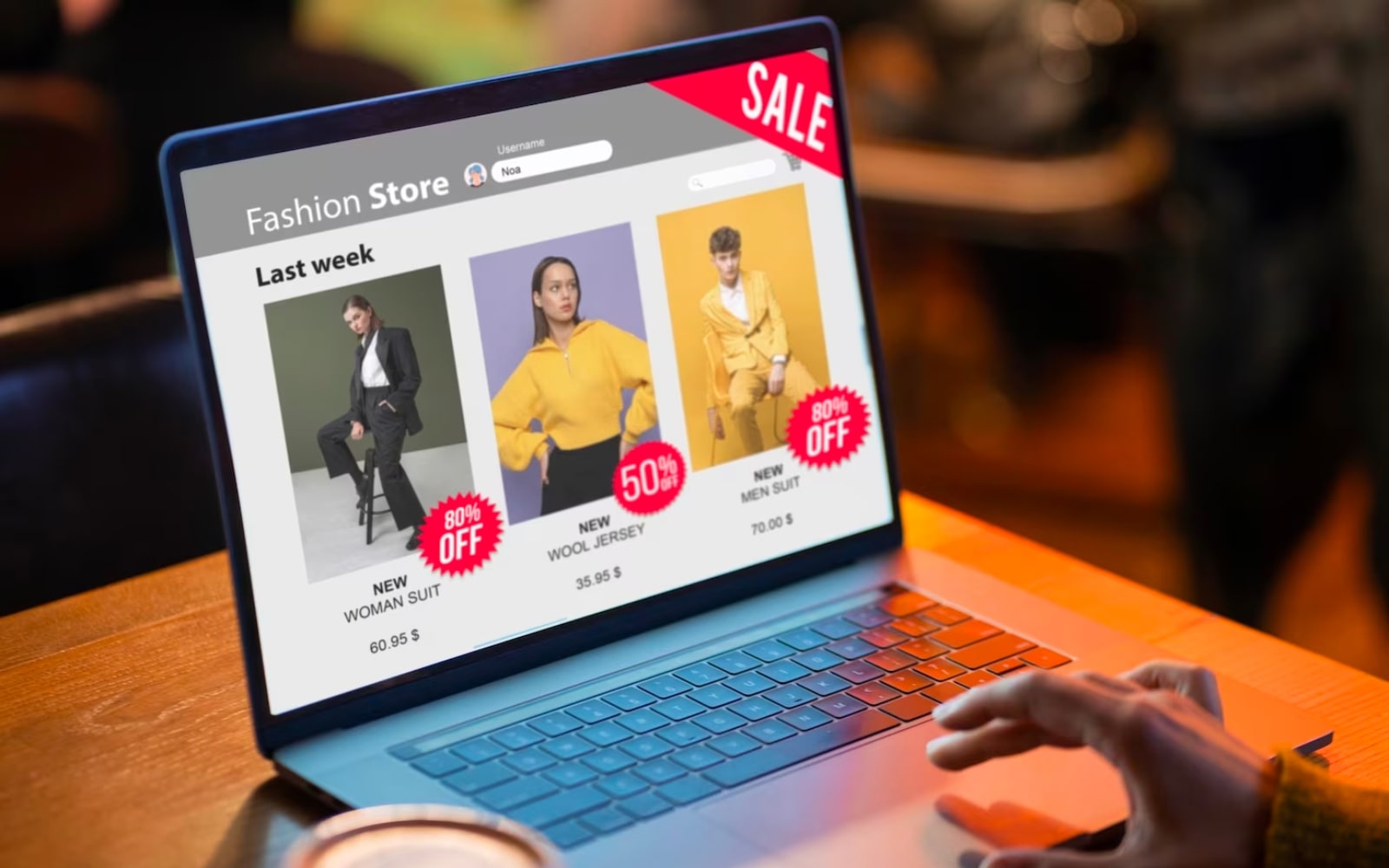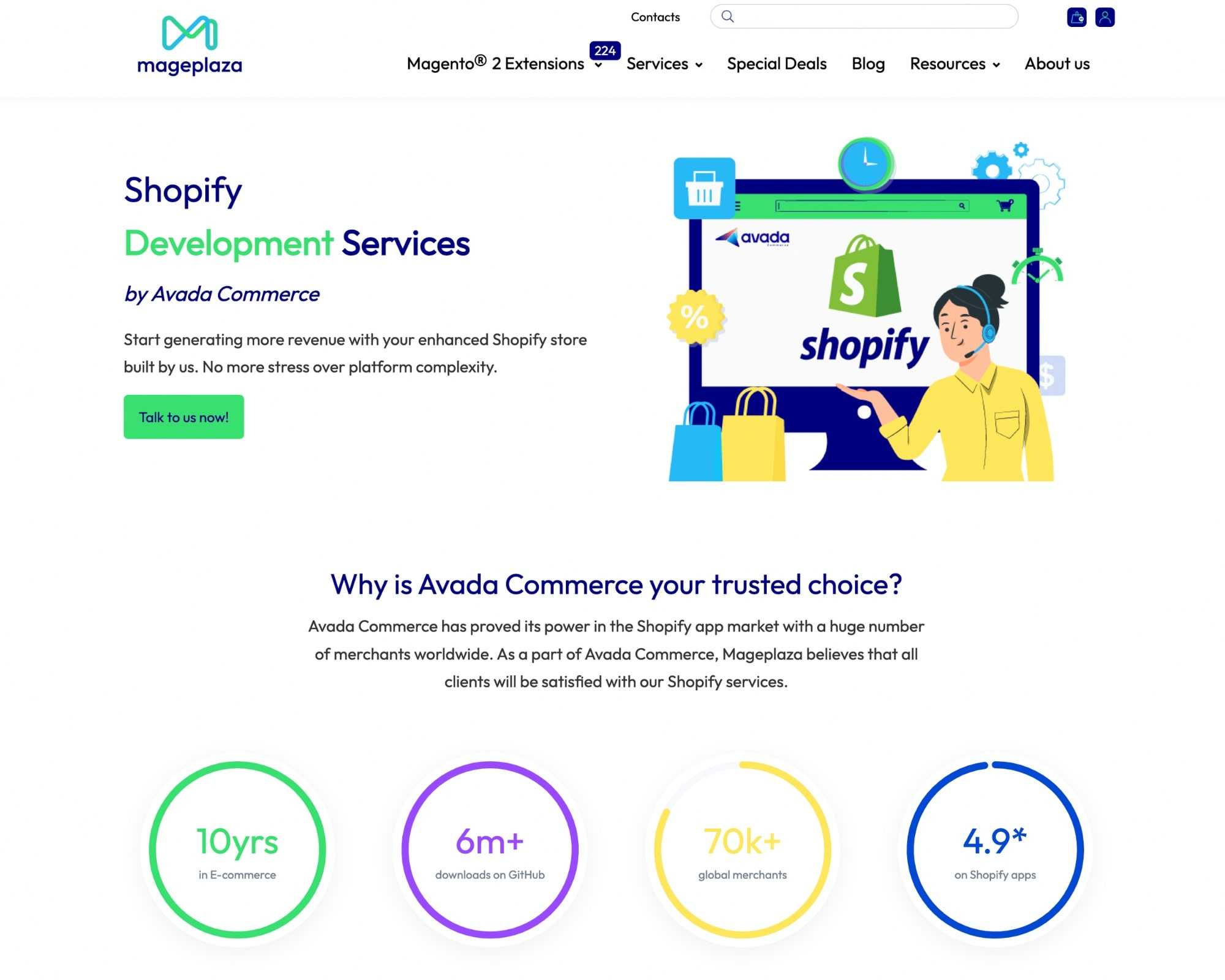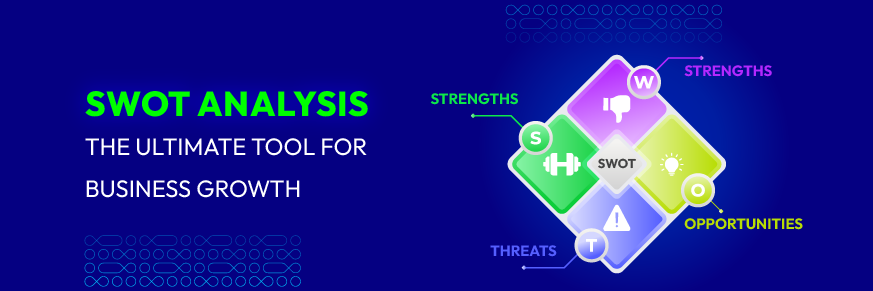Is Shopify Good For Dropshipping?
Summer Nguyen | 11-03-2023

Dropshipping is a promising business model in the rapidly evolving online commerce era, allowing entrepreneurs to venture into e-commerce without traditional inventory management and product fulfillment complexities.
As the global e-commerce landscape expands, choosing the right platform to launch your dropshipping business becomes essential. Plus, one name that consistently stands out in this domain is Shopify. But is Shopify good for dropshipping?
In this article, we’ll explore Shopify’s capabilities, features, and suitability for dropshipping ventures, analyzing strengths, weaknesses, and critical factors to determine the right fit for the entrepreneurial journey.
Table of Content:
What is dropshipping?
Dropshipping is a business strategy in which an online store orders products from a supplier or manufacturer and then arranges for them to be delivered to the the customer.

Here’s how the dropshipping process typically works:
- Setting up an online store. The dropshipper sets up an e-commerce website or an online marketplace store to display products for sale.
- Selecting products. The dropshipper chooses which products they want to sell from a supplier’s catalog. They can often pick from a wide range of items.
- Listing products. Product listings are created on the dropshipper’s online store, including product descriptions, images, and prices.
- Customers order. When a customer places an order and purchases on the dropshipper’s website, the dropshipper forwards the order details and payment to the supplier.
- Supplier fulfillment. The supplier then processes and immediately sends the products to the customer on behalf of the dropshipper. This step is crucial, as it means the dropshipper doesn’t have to handle inventory, pack boxes, or ship products themselves.
- Customers receive the order. The provider sends the product to the customer directly, often unaware that the item didn’t come from the dropshipper’s own inventory.
Dropshipping businesses thrive in competitive online marketplaces through careful product selection, effective marketing, and customer service, requiring thorough research and planning before starting a venture.
Related topic: What is Dropshipping? The Definition and Best Practices
Is Shopify good for dropshipping?
So, is Shopify good for dropshipping? The answer is YES!

Shopify has gained immense popularity as a platform for dropshipping, and there are several compelling reasons why it is considered an excellent choice for entrepreneurs looking to start a dropshipping business. Here are some key reasons why Shopify is good for dropshipping:
- User-friendly interface. Shopify offers a user-friendly and intuitive interface, enabling even those with no technical knowledge to use it. You can quickly establish a web-based store, add products, and manage your store with ease.
- Diverse range of apps. Shopify offers a variety of dropshipping-specific apps and plugins in its extensive app store, which automates business processes like product sourcing, order fulfillment, and marketing, saving time and effort.
- Integration with dropshipping platforms. Shopify integrates with popular dropshipping platforms like Oberlo and AliExpress, enabling easy import of products, inventory management, and automated order processing in your store.
- Customization. With the variety of themes that Shopify offers, you can create a distinctive and eye-catching online store. You are also able to customize your store’s branding and layout to match your niche and target audience.
- Secure and reliable. Shopify takes security seriously. They offer SSL encryption, ensuring that customer data and transactions are protected. Additionally, Shopify’s hosting is robust, ensuring your store remains stable and available to customers.
- Scalability. Whether you’re just starting out or experiencing rapid growth, Shopify can accommodate your needs. You can upgrade your plan and add features as your business expands, ensuring that you’re not limited by your e-commerce platform.
- Mobile responsiveness. In an era where mobile shopping is on the rise, Shopify provides mobile-responsive themes, ensuring that your store appears and works properly on various devices.
- SEO-friendly. Shopify is a powerful tool for online stores, designed with SEO in mind, offering features like customizable title tags, meta descriptions, and clean URL structures to improve search engine rankings.
- Robust analytics. Shopify offers comprehensive analytics tools that enable store performance tracking, sales monitoring, and customer behavior insights, enabling informed decision-making to optimize dropshipping businesses.
- 24/7 customer support. Shopify provides round-the-clock customer support via email, live chat, and phone, ensuring assistance with technical issues and questions about running a dropshipping business.
- Options for payment. Numerous payment gateways are supported by Shopify, making accepting payments from customers worldwide easy. This flexibility can help you expand your dropshipping business to a global audience.
- Community and resources. Shopify’s user community offers expert tips and strategies for dropshipping success, with numerous online courses, tutorials, and forums available for mastering the platform.
In conclusion, as a top e-commerce platform, Shopify offers a user-friendly interface, extensive app ecosystem, and strong features that make it a great option for entrepreneurs interested in dropshipping, with its scalability, security, and support options.
How to start dropshipping on Shopify?
Step 1: Conduct market research
Market research is a critical first step when launching a dropshipping business on Shopify. This process is essential for making informed decisions, identifying opportunities, and increasing the chances of success in the highly competitive world of e-commerce.

Here’s a comprehensive guide on how to conduct market research for your Shopify dropshipping venture:
- Choose a niche or product category that aligns with your passion and expertise to gain an edge in marketing and selling products.
- Utilize tools to identify products with consistent demand and steady interest over time.
- Conduct market research on competitors, identify successful dropshipping stores, and analyze their product offerings, pricing strategies, and marketing techniques.
- Recognize your target market by learning about their demographics, interests, and issues.
- Use keyword research tools to find appropriate keywords for your niche.
- Identify trustworthy dropshipping suppliers through platforms.
- Calculate profit margins by considering product costs, shipping fees, and Shopify’s monthly subscription to ensure healthy margins after all expenses.
- Assess shipping times from suppliers to your target market for customer satisfaction.
In summary, regularly revisit market research to stay updated on industry trends and customer needs, and with a well-executed dropshipping business plan, you can increase your chances of success on Shopify.
Step 2: Choose a product and suppliers
Starting a dropshipping business on Shopify is a thrilling e-commerce venture that eliminates inventory and shipping logistics. The second step is selecting the right products and suppliers, significantly impacting the business’s profitability and sustainability.

Here’s a comprehensive guide on how to choose a product and suppliers:
- Conduct thorough market research to identify trending or niche products.
- Examine potential Shopify dropshipping competitors.
- Choose reliable suppliers or directly contact manufacturers for a wide product range, competitive pricing, and exceptional customer service.
- Request samples from selected suppliers to personally evaluate their product quality.
- Calculate your pricing strategy carefully, determining product cost, shipping fees, and your desired profit margin.
- Be transparent about shipping times with your customers.
- Build strong relationships with suppliers through clear communication for better terms, priority fulfillment, and access to exclusive products.
- Understand the legal aspects of dropshipping and ensure all necessary permits and compliance with Shopify’s terms of service.
To sum up, selecting the right products and suppliers is important for a successful dropshipping business on Shopify. So, research, selection, and ongoing evaluation are essential for sustainable success.
Step 3: Create a Shopify account
Starting a dropshipping business on Shopify is an exciting venture that can potentially lead to a successful online store. Creating a Shopify account is an essential step to begin your journey in the world of e-commerce.

Here’s a comprehensive overview of how to do it:
- Open your web browser and navigate to the Shopify website.
- On the Shopify homepage, click the “Get Started” or “Start Free Trial” button to begin the sign-up process.
- Enter your valid and frequently accessed email address.
- Create a secure Shopify account password that complies with the platform’s password requirements.
- Choose a distinctive name for the website of your business.
- Provide additional information to help customize your experience.
- After filling in the required information, click the “Next” button to proceed.
- Explore the Shopify admin dashboard to customize your store.
- After the trial period, select a Shopify plan that suits your needs, with various features and pricing options to align with your business goals and budget.
- To set up your account, provide your payment information for billing and monthly fees associated with your chosen plan.
Congratulations! You’ve successfully created a Shopify account and are well on your way to starting your dropshipping journey. A successful internet store requires time and work to create, so continue to learn and optimize your business as you go along.
Step 4: Select a domain name
Choosing the right domain name is crucial for starting a successful dropshipping business on Shopify, as it not only represents your online address but also your brand and significantly impacts your business’s success.

Here’s a concise guide on how to choose a domain name:
- Ensure your domain name accurately represents your niche or product category.
- Choose a domain name that is easy to spell, pronounce, and remember.
- Employ keyword research tools to find suitable keywords in your niche.
- Aim for a unique domain name that stands out.
- Avoid using domain names that infringe on trademarks or copyrights.
- Choose common domain extensions like .com,.net, or.org for trust and recognition.
- Be cautious about using trendy or time-sensitive terms in your domain name.
- Use domain registration services to check if your desired domain name is available.
- Ensure the domain name is available on major social media platforms to maintain consistency in your branding.
Remember that your domain name is an essential part of your brand’s identity, so take your time to select one that aligns with your dropshipping business and sets the right tone for your Shopify store.
Step 5: Set up your Shopify store

Starting a dropshipping business on Shopify can be an exciting journey, allowing you to sell products without the hassle of managing inventory. To get your Shopify store up and running successfully, follow these step-by-step instructions:
- Start by creating an account on Shopify’s website.
- Pick a Shopify plan that fits your spending limit and business needs.
- Choose a profitable field for your dropshipping company.
- Find reliable suppliers for your products.
- Install dropshipping apps to help you import products and manage your inventory.
- Customize your store’s appearance using Shopify’s themes and templates.
- Configure payment gateways to enable secure transactions.
- Add product listings to your store.
- Determine competitive pricing strategies to attract customers while ensuring profitability.
- Utilize relevant keywords in your product descriptions to improve the SEO of your store, titles, and meta tags.
- Configure shipping settings, including rates and delivery times.
- Establish return, refund, and privacy policies to build customer trust.
- Once everything you’ve tested the purchasing process, launch your Shopify store.
Remember that dropshipping success requires dedication, market research, and ongoing effort to stay competitive and meet customer demands. So, keep learning and adapting your strategies to build a thriving online business.
Step 6: Install relevant apps

Starting a dropshipping business on Shopify requires careful planning and the use of appropriate tools, including installing relevant apps for efficient management and optimization. To start dropshipping on Shopify, follow these steps to install relevant apps:
- Access your Shopify account and ensure you’re in the admin dashboard.
- Click on “Apps” in the left-hand sidebar of your dashboard.
- Use the search bar to find dropshipping apps.
- Choose an app that suits your dropshipping needs by thoroughly reviewing its descriptions, reviews, and pricing details.
- Click the “Add app” or “Install app” button on the app’s listing page.
- After installation, follow the setup wizard to connect your Shopify store, import products, and set pricing rules.
- Adjust your store’s design and layout to accommodate the products you’re dropshipping.
- Use the app to import products from your chosen suppliers, ensuring you add attractive product images, descriptions, and prices.
- Configure your payment gateways and shipping options to ensure seamless customer transactions.
Don’t forget that the specific steps and app choices may vary depending on your niche and business model, but these general guidelines will help you get started with dropshipping on Shopify.
Step 7: Import products
Starting a dropshipping business on Shopify requires importing products into your online store, as it allows you to sell products without holding inventory, making it an appealing business model for entrepreneurs.

To start dropshipping on Shopify and import products, follow these steps:
- Create a Shopify account, choose a plan, and set up your store by selecting a unique domain name, customizing your theme, and configuring essential settings.
- Choose a trustworthy dropshipping supplier that offers the products you wish to sell.
- Install a dropshipping app like Oberlo, now integrated into Shopify or any other compatible app from the Shopify App Store.
- Open an account with the dropshipping provider and configure API.
- Utilize the app to search for products within your chosen niche, import them into your Shopify store, and customize product details, descriptions, and pricing.
- Create collections and categories to organize your imported products, making your store more user-friendly and easier to navigate.
- Determine your pricing strategy and profit margins.
- Enhance product descriptions and images to be distinctive and appealing to your target audience, and ensure they align with your brand identity.
Following these steps, you can successfully import products and kickstart your dropshipping business on Shopify. Remember that consistency, customer satisfaction, and effective marketing are key to long-term success in the dropshipping industry.
Step 8: Set prices and profit margins

Setting prices and profit margins is an important step when starting dropshipping on Shopify. Here’s a brief guide on how to do it effectively:
- Calculate all expenses related to your dropshipping business, including product costs, shipping fees, Shopify subscription, transaction fees, and marketing expenses.
- Compare prices for similar products by analyzing competitors and the market, considering factors like quality, brand, and shipping times.
- Determine the desired profit margin, which should cover your expenses while allowing room for profit.
- Keep in mind Shopify’s transaction fees and subscription costs when setting prices.
- Implement dynamic pricing strategies to remain competitive and maximize profit.
- Utilize Shopify apps or built-in features to strategically execute sales, discounts, or bundles to attract customers and boost sales.
- Keep track of sales, expenses, and profit margins, and adjust your pricing strategy.
- Focus on delivering value to customers and consider their perceived value and willingness to pay.
In closing, the process of setting prices and profit margins in dropshipping requires regular data analysis, strategy adjustments, and monitoring market dynamics to ensure the sustainability and profitability of your Shopify dropshipping business.
Step 9: Create policies
Creating policies is an essential step when starting dropshipping on Shopify. These policies help set clear customer expectations and establish trust in your business.

Here’s a brief guide on how to create these policies:
- Log in to your Shopify account and access your admin dashboard.
- Click on “Settings,” located in the lower left-hand corner of the dashboard.
- Under Settings, click on “Legal,” which will take you to a section where you can manage your store’s legal documents.
- Create a Return Policy template using Shopify’s standard template, specifying the return window, conditions, and restocking fees.
- Click on “Create from template” to customize your Shipping Policy, outlining your shipping methods, delivery times, and any additional charges.
- Create a Privacy Policy, ensuring compliance with data protection laws and accurately reflecting your handling of customer information, using a template provided by Shopify.
- Customize Shopify’s template to create a Terms of Service for your website, covering payment, user behavior, and dispute resolution.
- Review them for accuracy and legal compliance, ensuring they are understandable.
- Select “Save” or “Publish” from the menu to make your policies live on your website.
- Create links to your policies in the footer or other accessible areas of your Shopify store so customers can easily find and read them.
As a result, creating and maintaining these policies establishes transparency and builds trust with your customers, which is essential for a successful dropshipping business on Shopify.
Step 10: Launch your store

Launching your store is also a needed step to start dropshipping on Shopify. Here’s a brief overview of the process:
- Sign up for a Shopify account and select the pricing option that best meets your needs.
- Conduct comprehensive market research to understand the requirements.
- Select reliable dropshipping suppliers with high-quality products and efficient shipping services, as Shopify integrates with various dropshipping apps and platforms.
- Customize your Shopify store with a theme, branding, and product organization for a user-friendly and visually appealing design.
- Configure payment gateways to allow customers to make purchases.
- Utilize your chosen suppliers to import products into your store, enhancing your listings with appealing descriptions, high-quality images, and competitive pricing.
- Establish shipping options and pricing, provide multiple shipping methods, and clearly communicate shipping times to customers.
- Optimize product listings and website content with relevant key phrases, meta descriptions, and alt tags to improve visibility.
- Before launching your website, ensure that all features, including the shopping cart and checkout process, function smoothly.
- Launch your Shopify store and use paid advertising, email, and social media to market your products and attract potential customers.
Overall, launching your Shopify store is just the beginning. Also, success in dropshipping requires ongoing effort, marketing, and customer engagement to build a profitable business over time.
Step 11: Fulfill orders
Entrepreneurs can sell things online without having to keep anything in stock by using the dropshipping business model. Shopify makes it easy to set up and run, with order fulfillment being a crucial aspect.

Here’s how to do it:
- Order notifications are sent to your Shopify store via email or the Shopify dashboard when a customer places an order.
- Access order details by logging into your Shopify admin panel and going to the “Orders” section.
- Check the customer’s shipping address and order items to ensure accuracy.
- To place an order, contact your supplier via their platform or email, providing them with the customer’s shipping details and product specifications.
- Pay the supplier for the product and shipping costs, ensuring you have sufficient funds to cover these expenses.
- To update the order status in your Shopify dashboard, mark it as “Fulfilled” and input the supplier’s tracking information, confirming the customer’s order has been processed.
- Keep the customer informed about their order’s status and provide them with any tracking information.
- Handle returns and refunds according to your store’s policies and Shopify’s guidelines in case of order issues or customer requests.
- To prevent selling out-of-stock items, it is crucial to regularly check your supplier’s inventory levels and update your store accordingly.
To prevent selling out-of-stock items, it is necessary to regularly check your supplier’s inventory levels and update your store accordingly.
Step 12: Support customers

Supporting customers is crucial when starting a dropshipping business on Shopify. Here are some key steps to effectively support your customers:
- Stay accessible by providing prompt and concise responses to customer inquiries via email, chat, or a helpdesk system.
- Ensure your product listings are comprehensive, featuring precise descriptions, images, and specifications to aid customers in making informed choices.
- Clearly communicate shipping times, methods, and any potential delays.
- Create an FAQ section on your site to address common customer queries and issues, which can reduce the number of support requests.
- Implement clear return and refund policies, make them easily accessible to customers, and ensure fairness and responsiveness in processing returns and refunds.
- Select reliable suppliers and quality products to minimize the chances of customer dissatisfaction due to product issues.
- Add a live chat option to your site to offer real-time customer assistance.
- Encourage customers to leave reviews to continuously improve your products and services.
- Use social media to interact with clients, respond to their issues, and develop a devoted following.
- Use email marketing to inform customers about new items, promotions, and updates, while also providing a support channel.
- Foster a sense of community within your brand by asking customers to talk about their experiences and offer support.
In summary, focusing on customer support practices can improve the dropshipping business’s experience, build trust, and establish a solid reputation, leading to increased customer loyalty and referrals.
Step 13: Analyze and optimize
Starting a dropshipping business on Shopify is a low-risk e-commerce journey, but it requires more than just a product and website; analyzing and optimizing your store is crucial for success.

Here’s an overview of it:
- First, do some market and target audience research by identifying popular products and trends using tools and keyword research to understand market demand.
- Examine successful dropshipping stores in your niche, evaluating their offerings, costs, and marketing tactics to spot potential growth.
- Select dependable suppliers with a good track record, and evaluate product quality, shipping times, and customer service.
- Create an appealing and user-friendly Shopify store. Optimize the layout, navigation, and product presentation.
- Optimize your product listings and website for search engines. Use relevant keywords, meta tags, and high-quality images.
- Use paid advertising, email marketing, and social networking to increase traffic.
- Implement retargeting campaigns to re-engage potential customers.
- Implement inventory alerts and automation to monitor stock levels and prevent overselling or stockouts.
- Offer excellent customer service to build trust and encourage repeat business.
- Utilize Shopify analytics tools to track key metrics like traffic, sales, and ROI, and adjust your strategies accordingly.
- Monitor your expenses, including advertising costs and Shopify subscription fees, and adjust your budget allocation to maximize profitability.
To conclude, remember to continuously improve your store can boost conversion rates, and organic traffic, and build a successful dropshipping business. Also, dedication, adaptability, and customer value are key to success.
Read more: How to Start a Dropshipping Business in 2023
Start dropshipping on Shopify today with Mageplaza
As a reputable e-commerce solution provider, Mageplaza can help you as well as your business launch a successful dropshipping store on the Shopify platform, offering powerful tools and features to integrate and enhance their dropshipping business.

Starting dropshipping on Shopify with Mageplaza can be a lucrative opportunity for several reasons:
- Extensive product catalog. Mageplaza offers a wide range of services, allowing you to find niche products or popular items to sell in your online store.
- Automation features. Mageplaza provides automation features that streamline your dropshipping operations. You can automate product import, order processing, and inventory management, saving you time and effort.
- Customization options. Shopify and Mageplaza offer extensive customization options to design a distinctive and recognizable online store that stands out from the competition.
- Integration capabilities. With Mageplaza’s integrations, you can connect your store to various sales channels, payment gateways, and marketing tools, enhancing your store’s functionality.
- Support and resources. Mageplaza typically offers customer support and resources to help you succeed in your dropshipping venture. You can access tutorials, guides, and a community of users for assistance.
- Cost-effective solutions. Dropshipping minimizes upfront costs as you only purchase products when you make a sale. Additionally, Mageplaza’s pricing is competitive and can be cost-effective for small and medium-sized businesses.
- Access to a range of effective apps. As a part of Avada Commerce, whose Shopify app store offers a vast library of apps for dropshippers to customize their operations, Mageplaza extends our capabilities to the world of dropshipping.
Looking for a place to help create your own Shopify store? Look no further than Mageplaza’s services.
GET OUR CUSTOM WEBSITE SHOPIFY DEVELOPMENT
The bottom line
In conclusion, is Shopify good for dropshipping? Hope that you’ve got your own answer throughout this article.
Shopify is apparently a user-friendly platform with robust e-commerce features and third-party apps, ideal for entrepreneurs starting dropshipping journeys. Also, it offers scalability, customization, and creative product selection and marketing strategies.
So, if you’re considering venturing into dropshipping, Shopify is certainly a platform worth exploring.







